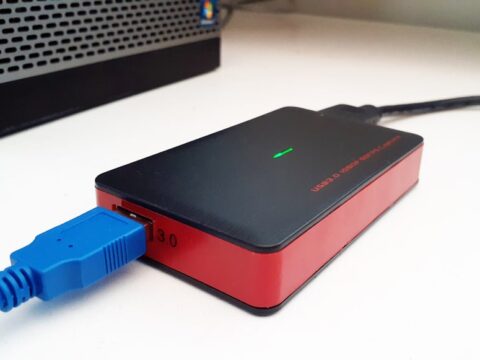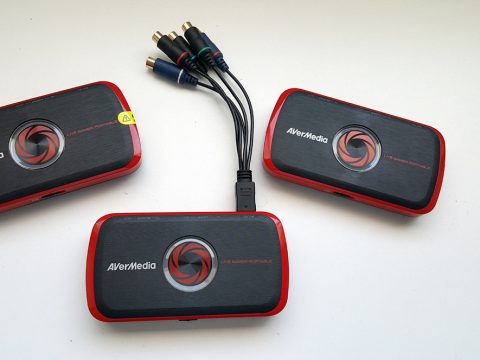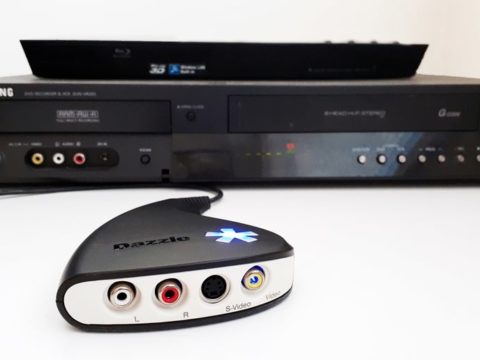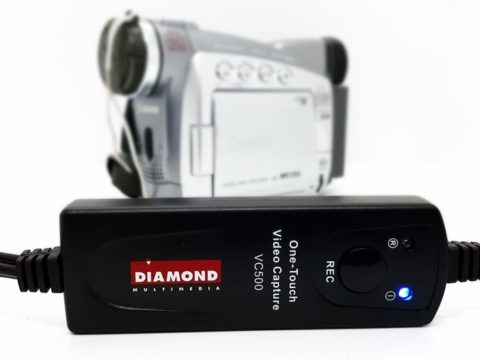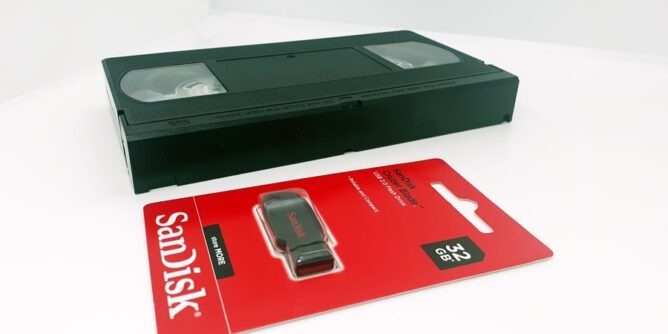
If you have digitized a full VHS tape onto your computer, then you may realize that some files can be quite large. How do you get that file onto something smaller like a USB? In this article let’s take a look at the simple process of how to transfer VHS files to USB.
And by VHS files I’m referring to MP4 or an AVI video file. Sure I get it, not a lot of people use DVD players anymore, and regardless a DVD disc will only hold one video file at a reasonable quality.

That being said I still do get clients wanting family videos onto DVDs but most want to transfer to a USB device or hard drive of some sort.
There is the option to record your videos straight to a hard drive like the AVerMedia C285 but that means you stuck watching the videos strictly with that device alone.
One other thing to take note of is capturing to a hard drive allows you to capture at the proper frame rate the original video was created. So for example, if a VHS-C tape was recorded from the camera at 60FPS, then the captured footage would also be 60FPS.
The moment you take that same captured footage and burn it to a DVD, then it becomes lowered to approx. 30FPS to play through a DVD player.
This is dependent of country regions, of course.
Portable Hard Drive or USB Thumb Drive?
Something to consider when transferring videos to a hard drive {or thumb drive} is how large should it be?
Depending how many home videos you have – maybe a one terabyte hard drive is not going to be enough. From what I’ve encountered with doing video transfers, 1TB has been fine.
I’ve had clients supply their own portable hard drives in sizes ranging up to 5TB. That’s fine if you’re using this to back up everything you own (photos, videos etc) but if it’s to view strictly on a TV then it may not work.
Samsung has an article describing partitions and compatibility with portable hard drives.

512GB thumb drives are extremely cheap to purchase and that may be an option for you. Having all the home videos fit onto a small USB stick does have its appeal. I would still recommend backing up that USB onto some other hard drive to be absolutely safe.
No products found.
Then there’s the whole possibility of losing the USB, which let’s be honest, if it gets placed into a safe drawer, it can soon be forgotten.
No products found.
If you were not going to back up the USB elsewhere, then I would definitely be using a case to store them in. Once they’re in a case, you’re more than likely going to remember anything in that case is extremely important.
The above video does a great job of explaining the pros and cons of portable hard drives and it gives you an idea of which type of hard drive you would prefer. While the SSD is

I do buy the older model hard drives for some clients as they are cheaper, but also newer models as well.
No products found.
I prefer transferring videos to a portable hard drive, they just seem bit more reliable to me. And while it may sound silly I’ve never seen anyone plug in a hard drive and instantly format it, without checking what was on it first.
But I have seen someone format a USB without blinking an eye- assuming there was nothing important on it.
Why Can’t I Copy Large Files To a USB Thumb Drive?
Most thumb drives are usually formatted in the FAT32 format, though the larger USBs and are in the exFAT format. The Samsung portable hard drive T5 is in the exFAT format, while the older 1 terabyte 2.5 inch hard drives are pre formatted as NTFS.
Both of these are fine for playing back videos on a modern TV that can accept a USB. And neither will have issues.
But if you were to use a larger 4GB hard drive, the TV will not (more than likely) be able to supply the right power to make the hard drive run and thus completely not work.
Most popular (and cheap) thumb drives are 32GB and 16GB. The problem with these is they’re pre formatted to FAT32.
Again, this isn’t a problem for photos, videos, files, music anything in general as long as no one file is larger than 4GB.
Portable hard drive on the other hand will let you transfer files larger as large as you want without issue, so let’s have a look at an example:

The image above is an empty 32GB thumb drive connected to the PC. Nothing has been changed. The file next to it is a video that was converted for a client.

Looking at the video properties we can see this video is almost 4 hours in length and is 20GB. Now this person wanted the video to be left complete and not cut into smaller segments.
If I try and copy this video to the 32GB USB (math says it will fit, right) I get the following error message.

File Too Large.
It would be nice if Windows gave a suggestion as to what you should do to make it work.
Formatting a USB Thumb Drive Using a PC
So instead of making the mistake and thinking to edit down the footage into something smaller. There is the quick and easy option to format the thumb drive so it will copy the 20GB without issue.

Highlight the mouse pointer over the USB drive letter and right click the mouse.

A new menu will open.
Simply move the pointer to the word Format and left click the mouse.

A new window will open giving information on the USB capacity, what it currently is pre formatted to and other options like giving the USB a drive name, for example, under the volume label you could write John Smith then format the USB.
This will then rename that USB to John Smith, regardless what computer it is used with.

Clicking on the File system drop down arrow will allow you to change the format of the USB.
You will see the three options that are available NTFS, FAT32 or exFAT.
For the example I changed the format to NTFS.

Once you click on start, you will get a final warning that all data will be erased. Click OK.

The process will be almost instant if the thumb drive has nothing on it, otherwise it can take up to a minute. If you are formatting a used hard drive (one terabyte for example) that can take up to five or ten minutes.
Format to NTFS Using a Mac
If by chance you wanted to play back videos through a Mac computer, be aware that they can read NTFS but are not able to write to an NTFS USB.
If you happen to have both types of computers you can format to exFAT that way you will be able to copy videos from a Mac computer and from a PC.
The above video goes through the different formats explaining their advantages and disadvantages.
Transfer VHS Files to USB
Once you have formatted the drive, you can simply copy the video file onto the USB folder and wait for it to copy across.
The speeds of copying a large video file can vary depending on your computer, what type of USB you decide to copy to and if you have other applications using up the computer resources.

The above example I tested was on USB 2.0 and claims it will take 50 minutes to transfer. Keep that in mind when if you decide to use older USBs you have laying around the house.
This number will always fluctuate, so the end result didn’t take 50 minutes, but it definitely is the slowest.

USB 3.0 certainly speeds up the process when copying when compared to USB 2.0.

The winning option goes to the SSD hard drive copying at a lightning pace.
Conclusion
In conclusion if you’re going to transfer VHS files to USB you can store them onto one thumb drive but I would definitely make sure there was still a back up elsewhere. Small USBs just seem to be easy to lose.

A large collection of family history is better saved onto a portable hard drive, whether be an SSD type or the older 2.5 inch types. Compared to transferring videos to DVDs, capturing to USB is faster and much more easier. Thankfully modern TVs have USB options to read digital media, so playback is going to be a breeze.
While I still make DVDs for some elderly clients, I am trying to coerce them more into the digital age. But when retail stores still sell DVD players for $30, I guess I will be waiting a while to convince them to transfer their videos to USB instead.

